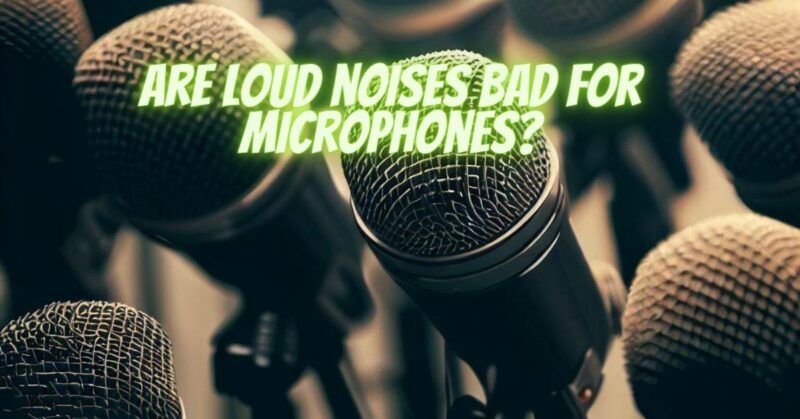Microphones are delicate instruments designed to capture and reproduce sound accurately. It’s essential to understand how loud noises can affect microphones to ensure their optimal performance and longevity. In this article, we explore the potential risks associated with exposing microphones to loud noises and provide guidance on how to protect them.
- Distortion and Clipping:
Exposing a microphone to excessively loud sounds can result in distortion and clipping. Distortion occurs when the sound waveform becomes distorted due to the microphone’s diaphragm being overwhelmed by high sound pressure levels. Clipping happens when the microphone’s audio signal exceeds its maximum handling capacity, leading to the flattening of peaks and the loss of detail in the recorded sound.
- Diaphragm Damage:
Loud noises can cause physical damage to the microphone’s diaphragm—the component responsible for converting sound waves into electrical signals. Intense sound pressure levels can stress the diaphragm beyond its limits, leading to deformation, tearing, or permanent damage. This can significantly impact the microphone’s ability to capture sound accurately and result in distorted or compromised audio quality.
- Sensitivity Reduction:
Exposure to loud noises over time can lead to a reduction in the microphone’s sensitivity. The microphone’s diaphragm can become less responsive to lower-level sounds, requiring higher input gain settings to achieve the desired recording level. This increased gain amplifies not only the intended sound but also any background noise or self-noise generated by the microphone itself, potentially degrading the overall audio quality.
- Prolonged Exposure:
Consistent exposure to loud noises can have a cumulative effect on the microphone’s performance. Even if a microphone can handle occasional loud sounds, prolonged exposure to high sound pressure levels can gradually degrade its components, impacting its frequency response, sensitivity, and overall functionality. It’s important to consider the maximum SPL (Sound Pressure Level) specifications provided by the microphone manufacturer and avoid subjecting the microphone to continuous loud sound sources.
- Protective Measures:
To protect your microphone from the detrimental effects of loud noises, consider the following measures:
- Use a pop filter or windscreen to prevent sudden bursts of air or plosives from reaching the microphone.
- Position the microphone at a safe distance from loud sound sources to avoid direct exposure.
- Employ proper gain staging and audio signal management to prevent distortion and clipping.
- Monitor and control the sound levels during recordings or performances to ensure the microphone operates within its specified limits.
- Store and transport the microphone in a protective case to safeguard it from potential physical damage.
Conclusion:
Loud noises can pose risks to the performance and longevity of microphones. It’s crucial to be aware of the potential dangers and take appropriate precautions to protect your microphone from distortion, clipping, diaphragm damage, and sensitivity reduction. By understanding the microphone’s specifications, implementing proper gain staging techniques, and employing protective measures, you can ensure that your microphone operates optimally and delivers high-quality audio for years to come.


